Neck Lift in Israel
Search and Compare the Best Clinics and Doctors at the Lowest Prices for Neck Lift in Israel

Find the best clinics for Neck Lift in Israel
With Medijump you can browse 7 facilities offering Neck Lift procedures in Israel. The cheapest price available is $4,891 in Ramat Gan. And for the cheapest price globally, prices start from $275 in Thailand.
Neck Lift in Ramat Gan
Price: $ 4,891
Neck Lift in Tel Aviv
Price: $ 10,031
Thailand offers the best prices Worldwide
Price: $ 275
From 24 verified reviews
sigalit kochmeister, 11 February 2020
Very professional, kind and attentiveLovely clinic and wonderful staffHighly recommend
From 109 verified reviews
Y N, 22 September 2020
Excellent medical center, with friendly staff and highly qualified doctors.Thank you for your work.My operation was successful
From 126 verified reviews
Y Jilani, 19 September 2020
A huge academic hospital serving the greater jerusalem area, world class health professionals and good location and amenities!
From 122 verified reviews
fadi hreaz, 27 August 2020
Hospital gives reasonable treatment but poor sorting
From 106 verified reviews
Abed Faroge, 22 September 2020
בית חולים וצוות ברמה שירותית ואיכותית מאד גבוהה . צוות מקצועי אדיב וקשוב לצרכי המטופלים . רשמת השירות וההיענות של צוות בית החולים משרה אווירת ביטחון שאכן המטופל בידיים טובות .
From 13 verified reviews
charles avital, 16 January 2020
Very beautiful and perfect
Tel Aviv Sourasky Medical Center (Ichilov Medical Center), can be found in Arison New Hospitalization Building, Tel Aviv, Israel and offers its patients Neck Lift procedures as well as 428 other procedures, across 29 different procedure categories. At present, there is no pricing information for Neck Lift procedures at Tel Aviv Sourasky Medical Center (Ichilov Medical Center). The pricing information is quite specialised, so it's only available on request, and the average price is around ฿325,332. Many medical professionals work at the Clinic, with 13 in total, and Tel Aviv Sourasky Medical Center (Ichilov Medical Center) is accredited by just one known accreditations institute, JCI Accredited
- Home
- Israel
Compare Before & After Photos of _procedure_photos.phpNeck Lift
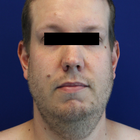
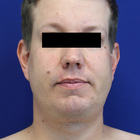
Front view
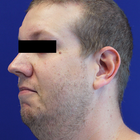
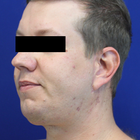
Half-side view
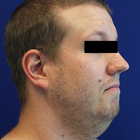
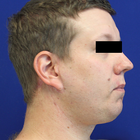
Full-side view
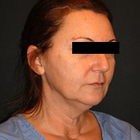
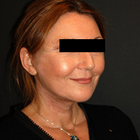
Half-side view
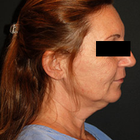
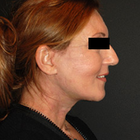
Full-side view
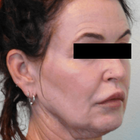
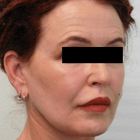
Half-side view
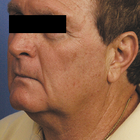
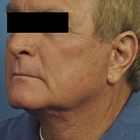
Half-side view
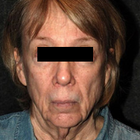
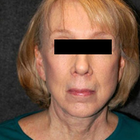
Front view
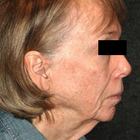
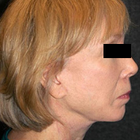
Full-side view
WHY US?
At Medijump, we're making medical easy. You can search, compare, discuss, and book your medical all in one place. We open the door to the best medical providers worldwide, saving you time and energy along the way, and it's all for FREE, no hidden fees, and no price markups guaranteed. So what are you waiting for?

Free

Best Price

Widest Selection

Risk-Free
What you need to know about Neck Lift in Israel

Aging is inevitable as you grow older, the good news is that technological advancements in the medical field have now found exemplary ways to slow down the aging process.
Over time, we lose our youthful contours in our faces and down our necks and these changes in our facial features could be due to old age, gravity, stress, environmental conditions or most likely a combination of all these factors.
A full facelift is usually one solution to rejuvenate your youthful look. However, there are cases whereby a patient’s upper facial area still displays a youthful look but excess wrinkling on the neck’s skin and a double chin are apparent. If your neck area doesn’t align with your upper facial appearance, then undergoing a neck lift might be a solution for you.
A Neck Lift, or its technical term Lower Rhytidectomy, is a cosmetic surgical procedure that enhances visible signs of ageing in your jawline and down your neck. The procedure might be performed on its own or as a part of a facelift.
What does a Neck Lift Procedure Involve?
A neck lift is usually a set of procedures to improve the lower part of your face and is typically done as a part of a facelift. Furthermore, this type of treatment procedure can also treat:
- Jowls - excess fat in the lower face
- Double chin or Turkey wattle - excess fat under the chin
- Loose skin on the neck
- Muscle banding in the neck - creates abnormal lower facial contours
The first step before undergoing the procedure is to consult with your surgeon. It is important that you discuss everything with your surgeon and fully understand the procedure and the result. You should also explore all of your options and alternatives. Keep in mind that a neck lift will not change your fundamental appearance nor will it stop your aging process.
While everyone has the possibility to undergo this type of treatment procedure, the perfect candidates for a neck lift are:
- Nonsmokers
- Individuals who do not have medical conditions that could possibly impair healing
- People with realistic expectations and a positive outlook
During your consultation, your surgeon will also:
- Discuss the type of anesthesia that will be used during the surgery
- Evaluate your general health, as well as any pre-existing health conditions
- Discuss other optional alternatives for the procedure
- Examine and measure your face
- Discuss possible outcomes of the procedure as well as potential risks and complications
In preparation for a neck lift treatment procedure, you may be advised to do the following:
- Avoid certain medications and supplements before your surgery and doing so may reduce the risk of excessive bleeding during the surgery.
- If you smoke, you will need to stop smoking four weeks before and four weeks after your surgery as it is necessary to aid the healing process.
- Eat a healthy diet
On the day of your scheduled surgery, it is advisable that you wear loose and comfortable clothing. Wear a type of clothing that you will not need to pull over your head and neck. In terms of anaesthetics, you may opt for sedation and local anaesthesia or go under general anaesthesia.
During your surgery, if minimal contouring is needed, it can be done with liposuction alone. As for a full neck lift procedure, incisions may be done either under your chin or behind your ears. These incisions will be closed with sutures and drains may also be placed before your wounds are bandaged.
How Long Should I Stay in Israel for a Neck Lift Procedure?
A neck lift is an outpatient surgical procedure, however, you also have the option to stay overnight in the hospital. You should remain in the Israel for at least 4-5 days after the surgery as there will be scheduled follow-up check-ups with your surgeon to monitor your healing. The sutures will need to be removed after a few days.
What's the Recovery Time for Neck Lift Procedures in Israel?
Typically, most people are able to return back to work in ten to fourteen days. In terms of having a physically active lifestyle like playing sports or exercise, you will need to wait at least three weeks or when your doctor gives you the all-clear.
What sort of Aftercare is Required for Neck Lift Procedures in Israel?
Note that it will most likely take several weeks to a couple of months for the swelling to fully disappear. You will be given specific instructions as to how to take care of your surgical site and drains, as well as medications to apply or take orally to help with your healing and to reduce the risk of infections. It is very important that you give yourself ample time to heal to get the most benefit from your treatment procedure.
What's the Success Rate of Neck Lift Procedures in Israel?
Results for neck lift surgery are normally long-lasting. In general, patients who have gone through a neck lift surgery have been very satisfied with the results.
Although possible risks and complications with this type of procedure are rare and if you experience any of the following symptoms, you will need to consult with your doctor immediately.
- Infection and bleeding
- Adverse reaction to anesthesia
- Scarring
- Allergic reaction
- Changes in sensation
- Hematoma or seroma
- Numbness and tightness in the neck area
Are there Alternatives to Neck Lift Procedures in Israel?
For those who are not a fan of surgery, there are non-surgical alternatives that are now available to help you enhance your facial appearance:
- Botox neck lifts - a non-surgical lift that tightens your neck muscles. Botox will be injected into the platysmal bands of your neck. Result typically lasts for three to four months and a touch-up treatment will be required.
- Thermage - also a non-invasive radiofrequency treatment procedure that smoothens and tightens the contours of your neck area, giving you a younger-looking appearance. This procedure can also be used to tighten your sagging stomach, knees, legs, butt, and arm skin.
- Ultherapy - by using ultrasound technology, this type of non-surgical treatment procedure can lift and tighten your loose skin, the result is usually visible in just one treatment.
Whilst the information presented here has been accurately sourced and verified by a medical professional for its accuracy, it is still advised to consult with your doctor before pursuing a medical treatment at one of the listed medical providers
No Time?
Tell us what you're looking for and we'll reachout to the top clinics all at once
Enquire Now

Popular Procedures in Israel
Prices Start From $28

Prices Start From $1,945

Prices Start From $167

Prices Start From $672

Recommended Medical Centers in Israel for Neck Lift

- Interpreter services
- Translation service
- Religious facilities
- Medical records transfer
- Medical travel insurance
- Health insurance coordination
- TV in the room
- Safe in the room
- Phone in the room
- Private rooms for patients available

- Interpreter services
- Translation service
- Religious facilities
- Medical records transfer
- Medical travel insurance
- Health insurance coordination
- TV in the room
- Safe in the room
- Phone in the room
- Private rooms for patients available

- Interpreter services
- Translation service
- Religious facilities
- Medical records transfer
- Medical travel insurance
- Health insurance coordination
- TV in the room
- Safe in the room
- Phone in the room
- Private rooms for patients available

- Interpreter services
- Translation service
- Religious facilities
- Medical records transfer
- Medical travel insurance
- Health insurance coordination
- TV in the room
- Safe in the room
- Phone in the room
- Private rooms for patients available

- Interpreter services
- Translation service
- Religious facilities
- Medical records transfer
- Medical travel insurance
- Health insurance coordination
- TV in the room
- Safe in the room
- Phone in the room
- Private rooms for patients available

- Interpreter services
- Translation service
- Religious facilities
- Medical records transfer
- Medical travel insurance
- Health insurance coordination
- TV in the room
- Safe in the room
- Phone in the room
- Private rooms for patients available

- Interpreter services
- Translation service
- Religious facilities
- Medical records transfer
- Medical travel insurance
- Health insurance coordination
- TV in the room
- Safe in the room
- Phone in the room
- Private rooms for patients available

- Interpreter services
- Translation service
- Religious facilities
- Medical records transfer
- Medical travel insurance
- Health insurance coordination
- TV in the room
- Safe in the room
- Phone in the room
- Private rooms for patients available

- Interpreter services
- Translation service
- Religious facilities
- Medical records transfer
- Medical travel insurance
- Health insurance coordination
- TV in the room
- Safe in the room
- Phone in the room
- Private rooms for patients available

- Interpreter services
- Translation service
- Religious facilities
- Medical records transfer
- Medical travel insurance
- Health insurance coordination
- TV in the room
- Safe in the room
- Phone in the room
- Private rooms for patients available
Neck Lift in and around Israel
About Israel
Israel celebrated 70 years of independence in 2018 - in what is a truly ancient land. The world’s only Jewish and democratic state is home to sites sacred to Judaism, Christianity, and Islam. While these holy places are truly unique attractions, there is more to Israel than religious heritage and complex politics. Jerusalem is the official capital and holy city to three world religions, previously mentioned, while Tel Aviv brims with beaches and bustles with urban vitality. Then there’s the Dead Sea and Masada, the stark, stunning Negev, and fertile Galilee. The number of museums and cultural institutions per relative area is larger in Israel than anywhere in the world.
Home to more than 30 JCI accredited facilities, medical tourists visit Israel for a variety of procedures, but particularly dental and tertiary care. Neck Lift procedures are also a popular choice.
Popular Parts of Israel
Israel is an alluring destination for those who want to appreciate its astonishing religious sites, stunning natural beauty, and remarkable historic relics.
- Tel Aviv is the economic and technological center of Israel, with a population of over 400,000; it is the most populous city in the country. Located on the Mediterranean coastline, the city offers sunny beaches for any sun-chaser. The city has impressive architecture and has a modern cosmopolitan landscape. Tel Aviv Museum of Art houses works by international artists. In addition, it has a nonstop nightlife with a huge party option to fit every taste.
- Haifa is the country’s third-largest city and it is one of Israel’s high-technology centers as well as a busy working port. The city may have an industrious image, but with a number of museums, gardens, and shrines, it is an amazing place to travel to. The Baha’i Gardens are possibly the most popular attraction as it is the final resting place of the prophet-herald of the Baha’i Faith. Tourists can have a bird’s eye view from the platform at the top or take a free Panorama Tour.
- Eilat is located at the southernmost tip of Israel and is the only Israeli city on the Red Sea. Families come to the city to have a good time on the beach and party-goers come for its all-night parties. The turquoise waters invite visitors to snorkel, scuba dive, or swim. It is recommended to stay in an Oasis at night to get a chance to stargaze under a clear desert night sky. During the day, visit the Eilat Mountains to have a beautiful view of an ancient desert.
- Tsfat or Safed is a quaint mountain-top city surrounded by pine forests. Located at an elevation of 900 meters, the city enjoys warm summers and cold winters. It is a popular summer holiday resort frequented by Israelis and foreign visitors. Here, tourists will find synagogues, art galleries, and unique crumbling stone houses.
- Jerusalem is one of the oldest cities in the world and three major Abrahamic religions (Judaism, Islam, and Christianity) considered it a holy city. Even though it has been destroyed and rebuilt over thousands of years, the city manages to endure its spiritual magnetism. It is overflowing with holy sites, diversity, and layers of history.
Weather and Climate in Israel
Israel is a year-round destination but the temperatures in the city vary widely. The coastal areas such as Tel Aviv and Haifa experiences a typical Mediterranean climate where the winters are rainy and the summers are hot. The area around Northern Negev has a semi-arid climate with hot summers and cool winters. The Southern Negev has a desert climate with extremely hot summers and mild winters. On the other hand, mountainous regions have pleasant summer and cold winters with a little snowfall.
Generally, the winter months from November to March are the coldest months in the country. When mountainous areas such as Jerusalem receives snowfall, the coastal areas experience heavy rainfall. Summer starts in June and ends in August and it is the hottest season in every part of the country, especially in the desert area where the heat can be overbearing. The seasons of spring and autumn have the best weather, with pleasant temperatures and fewer rainy days.
Getting Around in Israel
Ben Gurion Airport is the main gateway to Israel and it is the busiest airport in the country located 20 kilometers southeast of Tel Aviv and 45 kilometers northwest of Jerusalem. The airport is ranked among the five best airports in the Middle East. It serves both domestic and international flights to and from numerous major cities around the world. There is two main passenger terminal at this airport. Terminal 1 serves domestic flights and international budget airlines such as EasyJet and Vueling, while Terminal 3 serves international flights.
Since the distance between one city to another is relatively short, getting around Israel is easy. The quickest and most convenient way is by domestic flights. The tickets are not very expensive and deals are often available online. Sometimes a one-way ticket can cost as little as 89 NIS (25 USD). Buses are also convenient but can be slow during traffic jams. Buses connecting Jerusalem, Tel Aviv, and Haifa depart very frequently. A one-way ticket from Tel Aviv to Jerusalem is around 25 NIS (7 USD). Israel’s main bus company is the Egged Bus Company. Trains are also available and very comfortable. They are a lot faster than the bus but the cost can be higher.
Taxis are widely available and can be hailed directly from the streets. Although most taxis are metered, you can agree on a fixed rate and be aware that some drivers are known to overcharge tourists, so you should insist on using the meter and make sure that it is reset to the base fare after you get in. The base fare is normally around 12.30 NIS (3.5 USD). There is also a shared taxi van known as Sherut. It is a good option to travel between Tel Aviv and Jerusalem or Tel Aviv and Haifa.
Tourist Visas in Israel
All visitors must hold a passport valid for at least six months after the date of departure from Israel. Citizens of 99 countries including the European Union, Canada, Singapore, Russia, and the United States do not require a visa to enter the country for up to 3 months. Nationals not listed on the visa exemption agreement need to obtain a visa and should contact their nearest embassy of Israel. Citizens of 25 countries require a confirmation from the Israeli government before a tourist visa is issued.
Additional Information
- Local Currency: The currency is the New Israeli Shekel (NIS) and 1 USD will get you 3.28 NIS.
- Money & Payments: ATMs that accept international cards are widespread (mostly Visa and MasterCard), except at border crossings with Egypt and Jordan. Credit cards are widely accepted and tipping is common but normally not expected.
- Local Language: The official language is Hebrew and Arabic has a special status under Israeli law as a semi-official language. Russian is spoken by around 20% of the population. Most of the population can speak English fairly well as it is required in schools and universities.
- Local Culture and Religion: More than 70% of the population follows Judaism. There are small groups of Muslims, Christian, and Druze. Muslims are the largest minority group in the country.
- Public Holidays: The country celebrates major national holidays as well as Jewish holidays such as Independence Day, Jerusalem Day, and Hanukkah.
Popular Searches
- Plastic Surgery in Thailand
- Dental Implants in Thailand
- Hair Transplant in Thailand
- Breast Augmentation Thailand
- Gastric Sleeve in Thailand
- Gender Reassignment Surgery in Thailand
- Laser Hair Removal in Bangkok
- Botox in Bangkok
- Dermatology in Bangkok
- Breast Augmentation in Bangkok
- Coolsculpting in Bangkok
- Veneers in Turkey
- Hair Transplant in Turkey
- Rhinoplasty in Turkey
- Stem Cell Therapy in Mexico
- Rhinoplasty in Mexico
- Liposuction in Mexico
- Coolsculpting in Tijuana
- Rhinoplasty in Korea
- Scar Removal in Korea
- Gastric Sleeve in Turkey
- Bone Marrow Transplant in India
- Invisalign in Malaysia
- Plastic Surgery in the Dominican Republic
- Tummy Tuck in the Dominican Republic
- Plastic and Cosmetic Surgery in Poland
- Rhinoplasty in Poland
- Hair Implant in Poland
- Dental Implants in Poland
- IVF in Turkey






